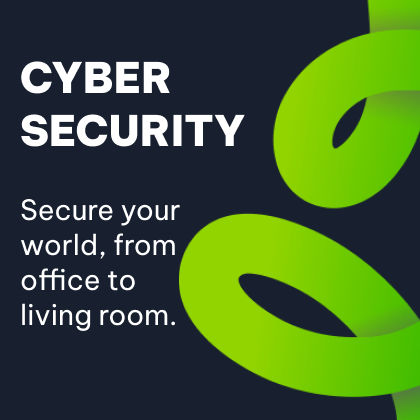Two years ago, “I’m working from home” meant a phone call to HR. Now, it’s an instruction.
Truth be told, the conventional office space has been gradually phased out worldwide for a good few years. People talk about Google and their nap pods, slides instead of stairs, open plan stations and collaborative, unregulated work environment as if it’s the adult Disneyland but, truth be told, there are even agencies in South Africa who’ve implemented gamification in their offices.
The reasoning behind this is that we’ve seen a shift in mindset and increased realisation that conventional ‘desk-and-cubicle’ workspaces, while cost-effective, aren’t conducive to motivated employees or relaxed state of mind. As such, the pandemic-accelerated process of redefining the way employees should work has been an eye opener to say the least.
Enter the Hybrid Workspace, today’s topic of discussion.
Lockdown completely scrapped the rulebook to show us that what we thought was ‘impossible’ was actually pretty flexible.
‘I can’t work if I’m not at a desk, it’s impossible’
‘I can’t stay at home, it’s impossible’
‘I can’t just sit at my desk working without talking to people, it’s impossible’.
Fast-forward a few months and we’ve all had to reassess what the word ‘impossible’ really meant, and re-evaluate when, where and how our employees should work.
Initially, Work from Home was the phrase of the day, if not out of necessity more than anything else. As regulations and fear around the virus has eased, however, we’ve seen a more flexible, Hybrid work model which combines the best of both worlds and is sure to drive the next wave of office regulations.
Said Hybrid model amalgamates stay at home principles with occasional, sometimes necessity-only in person interactions. It’s driven by the Internet and digitisation, but rather than negating the entire value of conventional office spaces entirely, has simply allowed its purpose to evolve.
True, remote working isn’t a fit for everyone, but it’s here to stay, and companies will need to maintain flexi-environments for at least the foreseeable future. There’s substance in the Data as well, as a recent SMB Group Study has indicated the following insights:
- 47% of South African businesses are investing in technology to support remote working
- 51% have created long-term strategies to incorporate more flexible workstyles
- 59% of SME’s have expanded their WFH programs to become more inclusive
For better or worse (well, we say for better) it’s here to stay. And, with a spread-out workforce (employees sometimes clock in from different cities or countries), the focus is no longer “how will we do it?” but facilitating an inclusive environment. This environment needs to enable collaboration yet provide quality remote access to all necessary Data and tools while meeting deliverables. And, as vital as technology is in the process, the incorrect platforms could prove to be a hindrance rather than your greatest asset.
Here’s an outline of all the areas you need to focus on, and how FTTB can play a role in making it easier.
- A fluctuating office environment means your Network needs to be flexible.
At any given time, your office demands may be minimal or operating at capacity. Sure, more often than not you should be able to survive unscathed, but on days where people come in, you can expect higher demand and strain on your bandwidth.
But, you ask, it managed fine before, what’s the issue now? Well, you need to facilitate that just because your staff is in, doesn’t mean everyone else is. Take Vox, for example, with over 1700 employees nationwide. A team such as Marketing may come in for the day, but everyone they communicate with both internally and externally still needs to connect remotely. As such, the bandwidth is tested, as the majority of meetings previously held in person now need to be done remotely.
This means increased video demand, increased web browsing and, of course, more strain on your Fibre. Ever tried browsing while the kids are playing Call of Duty (or vice versa)? You’d know that a standard FTTH package starts lagging at 3 users, so imagine what a dedicated team of constantly connected professionals can do to a lower end one?
- Users on private connections can pose a security threat.
Ever wondered why we’re seeing an increased amount of phishing attacks and ransomware headlines? It’s not because the virus gives you hacking powers (although that might explain why Bill Gates is in the spotlight…).
Employee and company Data are now at increased risk, as accessing content remotely can sometimes happen on unsecure networks. Plus, it’s significantly easier to hack into ‘John Smith’s Home Wi-Fi’ than it would be to even go near our Vox Firewall (we know what we’re doing, in fact, we’re experts in the field). As such, you need to ensure that your Fibre connection and the resultant security are world-class and leave no room for compromise.
You also need to factor in that many remote workspaces make use of a VPN, which in turn presents its own share of risks. With an influx of employees dialling in remotely, the amount of secure VPN connections will ultimately have an impact on your brands vulnerability online.
- You’ll need to get your head out the Clouds.
We’re big advocates for Cloud solutions, and with good reason. You already know the drill and how much it makes life simpler to be able to access your Data from anywhere, but did you factor in that performance can be impacted by speed and reliability?
Your Cloud tools and related applications can really only be as good as the network they’re delivered from. More so, many brands are installing new services which need to be integrated effectively and managed correctly. Much like your head office needs to be running properly in order for franchisees to benefit, your business network needs to be on point to deliver the resources required effectively.
You’re probably past the stage where you’re reliant to adopt a Hybrid Space (it’s about time!), but the only way to keep your employees motivated and productive is through adequate support. Your Business Fibre needs to be on point in order for your team to function the way it should, which is why you can’t take any chances when it comes to your network.














